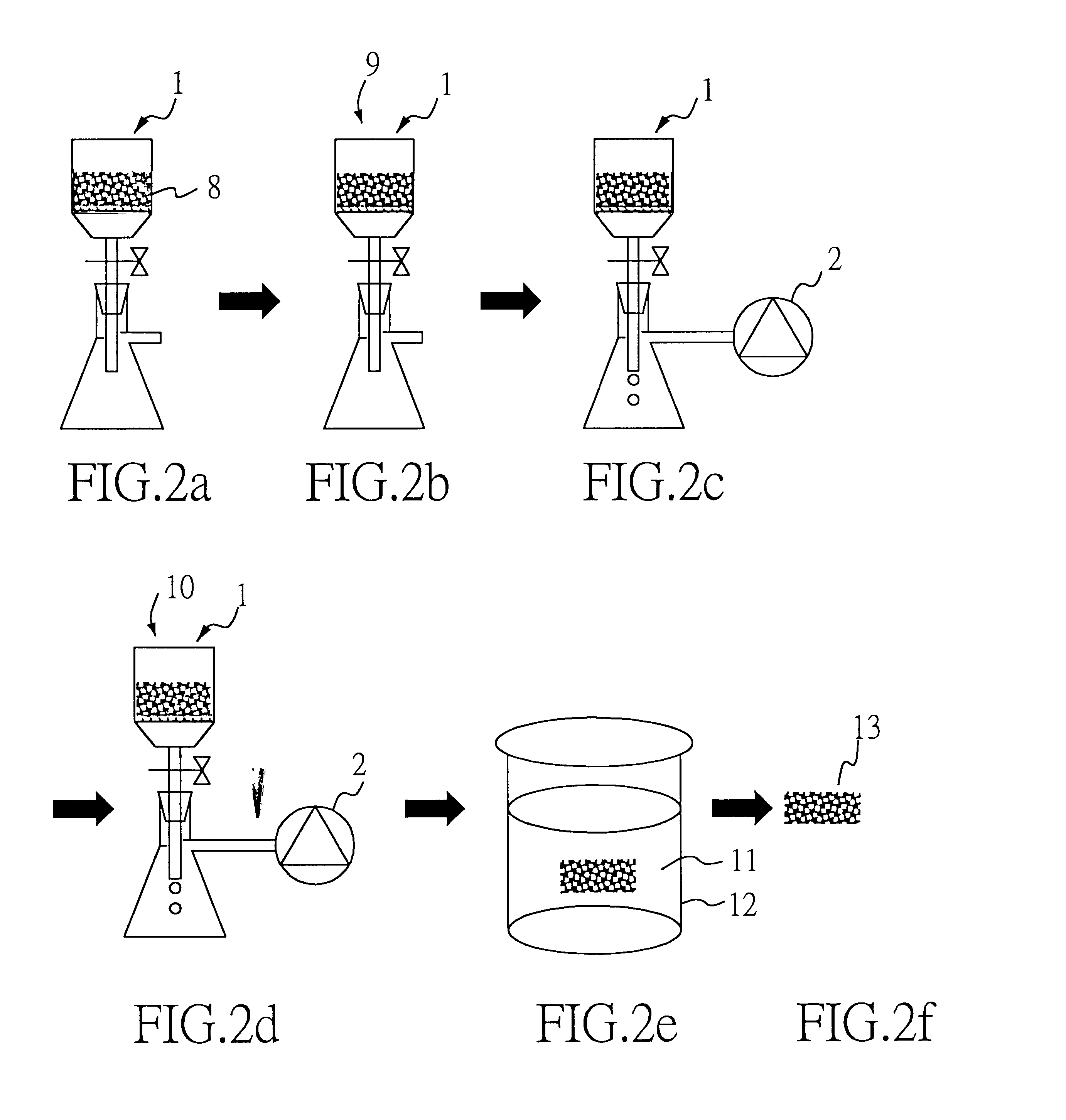Process for producing porous polymer materials
a technology of porous polymer materials and polymer materials, which is applied in the field of process for producing porous polymer materials, can solve the problems of high cost, difficult to magnify the size of porous materials, and disadvantages of mass production
- Summary
- Abstract
- Description
- Claims
- Application Information
AI Technical Summary
Benefits of technology
Problems solved by technology
Method used
Image
Examples
Embodiment Construction
The polymer material used in this example is PLGA polymer prepared by ring-opening polymerization and having the molecular weight of 200,000 determined by gel permeation chromatography.
First, a lump of PLGA polymer material was pulverized in a disintegrator. Polymer particles were passed through a sieve of 60-80 meshes to obtain polymer particles in the size of between 177 and 250 micrometers. The soluble material selected in this example is sodium chloride particles which have a particle size of about 250 micrometers. The solvent used to solve the polymer material is 1,4-dioxane.
The PLGA polymer particles were mixed with sodium chloride particles at different weight percentages. The mixture of PLGA polymer particles and sodium chloride particles were poured into the apparatus shown in FIG. 1. The apparatus in the example comprises a filtration apparatus 1 and a suction apparatus 2 which is connected to the filtration apparatus 1 and provides a pressure difference. The filtration ap...
PUM
| Property | Measurement | Unit |
|---|---|---|
| particle size | aaaaa | aaaaa |
| particle size | aaaaa | aaaaa |
| pore size | aaaaa | aaaaa |
Abstract
Description
Claims
Application Information
 Login to View More
Login to View More - R&D
- Intellectual Property
- Life Sciences
- Materials
- Tech Scout
- Unparalleled Data Quality
- Higher Quality Content
- 60% Fewer Hallucinations
Browse by: Latest US Patents, China's latest patents, Technical Efficacy Thesaurus, Application Domain, Technology Topic, Popular Technical Reports.
© 2025 PatSnap. All rights reserved.Legal|Privacy policy|Modern Slavery Act Transparency Statement|Sitemap|About US| Contact US: help@patsnap.com


